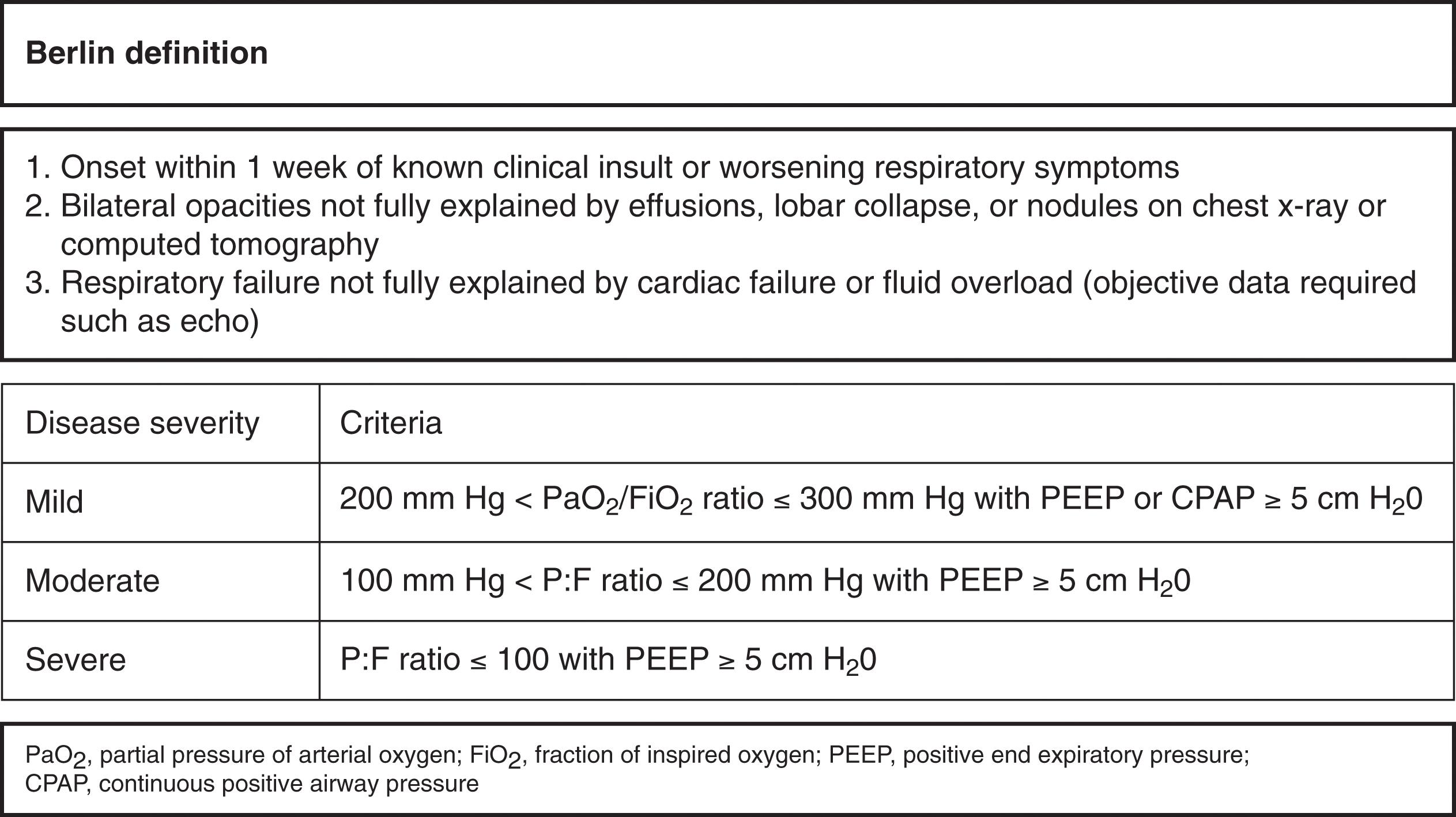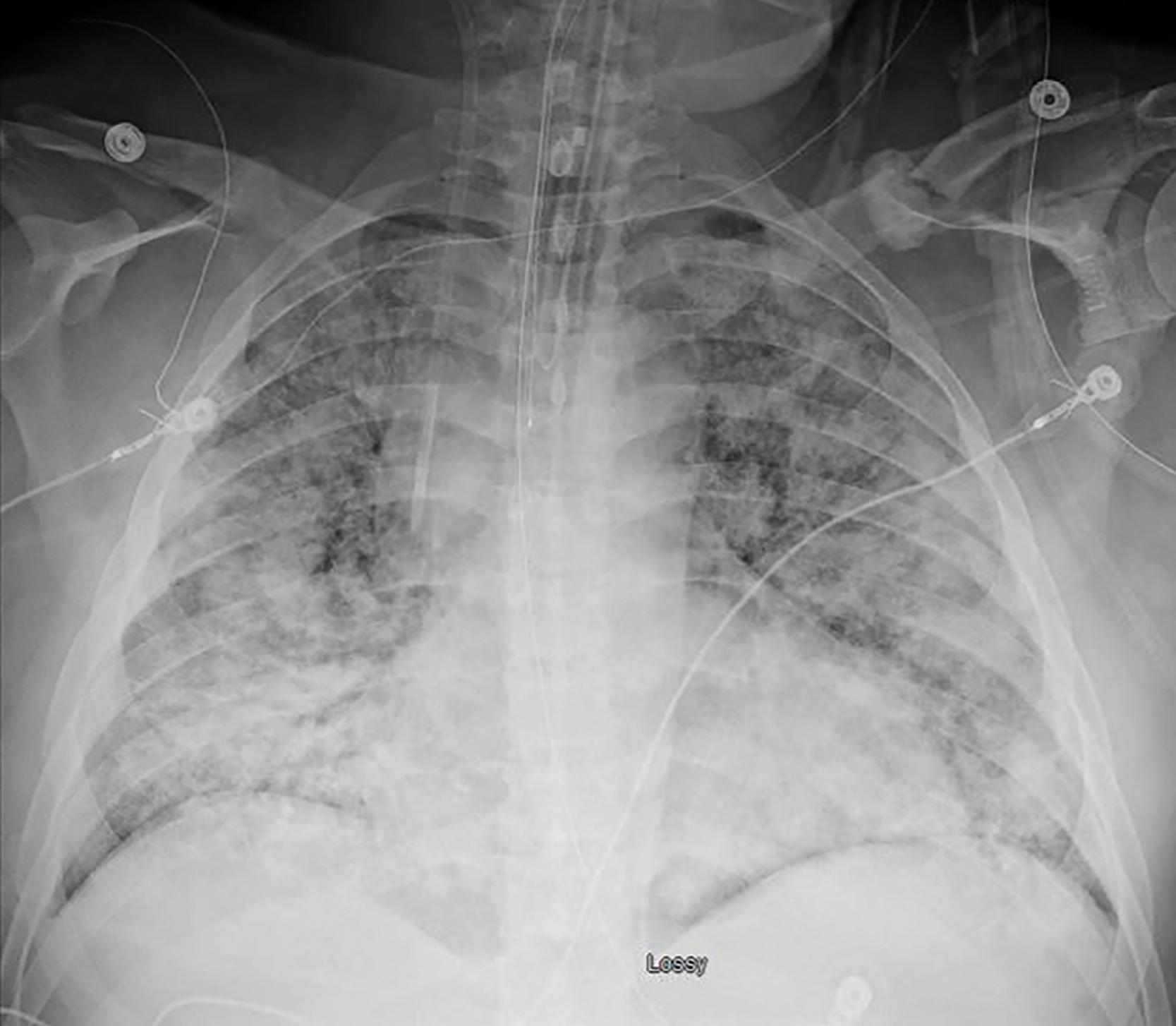Physical Address
304 North Cardinal St.
Dorchester Center, MA 02124
Since the advent of the mechanical ventilator and the modern era of critical care medicine, many topics have been the subject of intense debate and investigation. The acute respiratory distress syndrome (ARDS), first described over half a century ago by Asbaugh, a surgeon, has been such a subject. Despite multiple trials and attempted strategies, high mortality rates are still attributed to this disease process. ARDS is often a final common pathway of a myriad of disease processes as diverse as blunt chest trauma and sepsis to transfusion-mediated pulmonary damage, ending often in multisystem organ failure. Progress has been made in the treatment of ARDS, however. Recent advances in ventilation strategies, earlier diagnosis, and a better understanding of the underlying pathophysiology have combined to improve diffusion of gases and decrease iatrogenic lung injury, both critical components in managing patients with ARDS. These advances, among others, have contributed to a reported decline in mortality rates from greater than 60% three decades ago to the now commonly reported 30% to 35%.
ARDS, and formerly acute lung injury, have been described in the literature since the days of the Vietnam War when civilian physicians noted a disease state characterized by bilateral lung infiltrates, hypoxia, central and peripheral cyanosis, and respiratory infiltrates. Broadly applicable definitions concerning ARDS were not established for 20 years, however, hampering research into the epidemiology and treatment of the disease. New definitions produced in 1988, then refined by the American-European Consensus Conference on ARDS in 1994, defined specific clinical criteria needed to establish the diagnosis of ALI/ARDS. This definition has since been revised and replaced by the Berlin definition, which eliminates the term “acute lung injury” and further categorizes disease severity based upon the ratio of arterial oxygen tension to the fraction of inspired oxygen (Pao 2 /Fio 2 or P:F ratio) ( Fig. 1 ). In the absence of arterial blood sampling, the Kigali modification allows calculation from Spo 2 :Fio 2 ratios.

Patients with ARDS initially present with a combination of respiratory compromise and an inciting event. Over 60 different disease states have been associated with the onset of ARDS, but only a few make up the majority of the identifiable causes. Sepsis, pneumonia, pulmonary contusions, multiple transfusions, and aspiration are common causes, as is SARS-CoV-2 (severe acute respiratory syndrome coronavirus 2) more recently. Pulmonary contusions and transfusion-related acute lung injury (TRALI) are often associated with trauma patients. The heterogeneity of the ARDS population has led to difficulty in trial design relevant to therapies and management. For this reason, many have advocated subtyping ARDS by various measures including direct (pneumonia, aspiration) versus indirect (GI perforation, TRALI) lung insult and hypoinflammatory versus hyperinflammatory subtypes, but this classification remains in evolution.
Dyspnea, tachypnea, and hypoxemia often occur early in the clinical course, but must by definition be within 1 week to be considered as ARDS. Rapid worsening is also typical in the early course, often leading to the need for intubation and mechanical ventilation (MV). Laboratory studies can show a respiratory alkalosis, hypoxemia, and an elevated alveolar-arteriolar gradient secondary to shunting of pulmonary blood flow. Other laboratory abnormalities are usually secondary to the underlying disease state. As noted earlier, chest radiographs show diffuse bilateral pulmonary infiltrates, which are acute in nature ( Fig. 2 ). There has been demonstrated a correlation between the Radiographic Assessment of Lung Edema (RALE) score and morbidity and mortality. Chest computed tomography (CT) early in the disease demonstrates dependent areas of consolidation with accompanying atelectasis.

The clinical features of ARDS often have considerable overlap with a variety of other diseases, making ARDS a diagnosis of exclusion. As demonstrated in the Berlin criteria, cardiogenic pulmonary edema and other causes of hypoxemic respiratory failure must be excluded for a diagnosis of ARDS. Cardiogenic pulmonary edema can be quite difficult to distinguish from ARDS because the presentation can be clinically identical. In addition to clinical assessment of fluid balance, cardiac function testing is necessary. Measuring plasma B-type natriuretic peptide (BNP) levels, as well as transthoracic or transesophageal echocardiography, can give a picture of cardiac performance. Multiple studies have not shown a benefit in the use of a pulmonary artery catheter (PAC) in the diagnosis or management of ARDS; however, right-sided heart catheterization can still be considered if other evaluation techniques are unable to differentiate ARDS from cardiogenic pulmonary edema. Other differential diagnoses can often be determined on the basis of history, clinical, and laboratory findings; imaging; bronchoscopy; and open lung biopsy in a highly selected group of patients.
The incidence of ARDS has been described in several population studies, first in 1972, with a reported incidence of 75 cases per 100,000 person-years. This correlates with 150,000 cases per year. Other studies have demonstrated an increased incidence up to 190,000 cases per year with an associated 3.6 million hospital days, and SARS-CoV-2-associated ARDS will inevitably result in further increases. Up to 20% of ventilated patients, and approaching 10% of ICU patients overall, will meet clinical criteria for diagnosis with ARDS.
Fatality related to ARDS is most often not related directly to hypoxemia, and many studies suggest that one in three patients diagnosed with ARDs will ultimately succumb to the process. Early adequate oxygenation appears to be beneficial, but the degree of hypoxemia derived from the Fio 2 /Pao 2 relationship has no bearing on eventual fatality. Predictors for fatality are patient specific, disease specific, and treatment specific. Patients older than 85 years of age portend a worse survival rate than the young. Disease-specific variables include pulmonary vascular dysfunction, dead space, infection, multiorgan dysfunction, and the nature of the inciting event. A growing body of evidence suggests that biomarkers and gene polymorphisms are associated with outcome and susceptibility to ARDS. Treatment-specific goals include limiting transfusions, avoidance of fluid overload, and early identification of infectious agents, as well as using other intensive care strategies to be discussed later. Early fatality is most often secondary to the inciting event; sepsis, usually of a pulmonary source, remains the leading cause of late fatality.
Normal, healthy lungs contribute to a wide variety of processes that maintain physiologic homeostasis including oxygen absorption, carbon dioxide release, and acid-base balance. Gas exchange is dependent on open, dry pulmonary alveoli located in close proximity to a functioning capillary bed. Fluid balance in the lung, just as in other semipermeable tissues, is dependent on a gradient described by the Starling equation. Fluid movement across vessels and the interstitium is therefore directed by a relationship between hydrostatic and oncotic forces, including intracellular proteins. This balance allows a small amount of fluid out of the capillaries, and alveolar edema and disruption of gas exchange is avoided by maintenance of tight junctions between alveolar epithelial cells, intracellular proteins favoring reabsorption, and interstitial lymphatics returning lost quantities of fluid to the circulation.
ARDS is a disease process in which alveolar surfaces are damaged, including the alveolar cell membrane, resulting in the loss of the carefully constructed forces favoring reabsorption and resulting in loss of inflammatory rich fluid into the lung itself. Because this interface occurs between the alveoli and capillary bed, disruption can occur as a direct result of alveolar injury (pneumonia, inhalational injury, aspiration) or as a result of inflammatory mediators from the capillary side (ischemic bowel, pancreatitis, shock), leading to the heterogeneity of the population.
ARDS results from disruption of the alveolar-capillary interface. Local injury gives rise to an increase in proinflammatory cytokines such as tissue necrosis factor(TNF), interleukin (IL) 1, IL-6, and IL-8. These cytokines play an important role in neutrophil and macrophage attraction, encouraging these arriving cells to activate and release toxic mediators such as proteases, elastase, and reactive oxygen metabolites, causing increased cell damage. Once the capillary endothelium and alveolar epithelium are bathed in these substances, the resulting cell damage causes release of intracellular proteins, destroying the oncotic gradient driving fluid reabsorption. Some evidence also exists that lymphatic reabsorption is downregulated as well. Damage to type II alveolar cells results in decreased surfactant production with the loss of pulmonary compliance seen in ARDS.
ARDS can be separated into three histologically distinct phases with loose association with clinical manifestations. These phases are the exudative, proliferative, and fibrotic stages. Early in the course of disease, the exudative phase, localized alveolar damage and loss of type 1 pneumatocytes become widespread, driven by the arriving neutrophils and macrophages. Hypoxemia and reduced gas exchange are often seen in this early stage. Generally, the exudative stage lasts approximately a week to 10 days and is replaced by a proliferative stage. The proliferative stage is marked histologically by replacement of type 1 pneumatocytes cells with type 2 cells, deposition of collagen, myofibroblasts infiltrating the interstitium, and squamous metaplasia. Surfactant production increases, and pulmonary edema begins to resolve. The clinical course of patients often differs from this second stage of ARDS for reasons still poorly understood. Some patients progress to resolution of their disease, some decline quickly to death, and still others continue to a fibrotic stage characterized by obliteration and replacement of normal lung tissue with mesenchymal cells, diffuse fibrosis, and duct formation. Histologically, this stage appears to be a fibrosing alveolitis and portends a worse outcome.
Become a Clinical Tree membership for Full access and enjoy Unlimited articles
If you are a member. Log in here